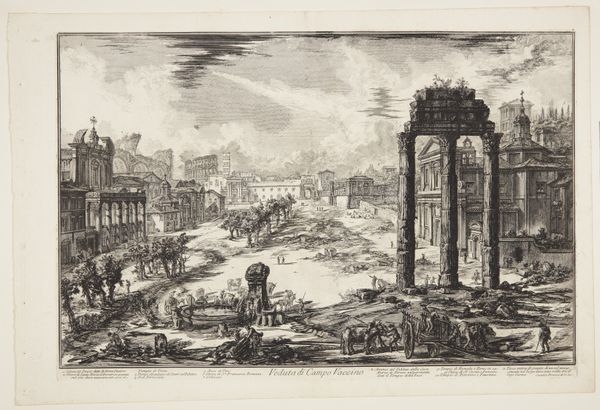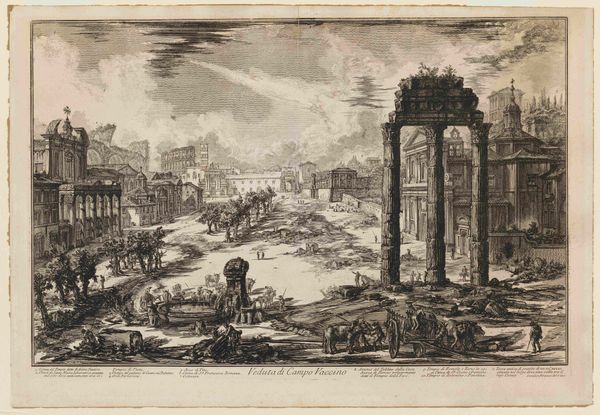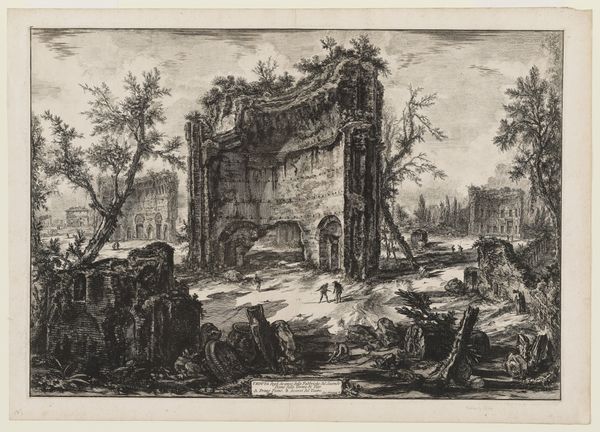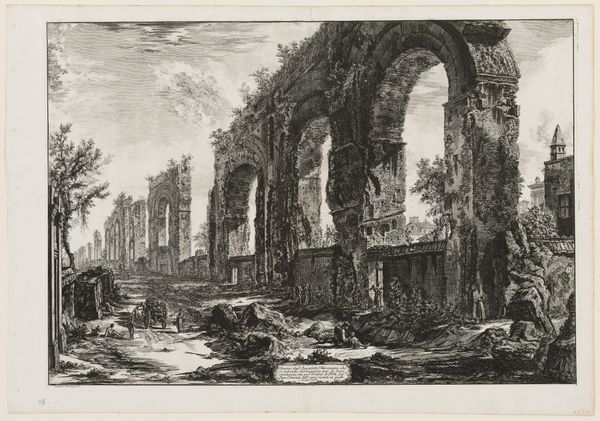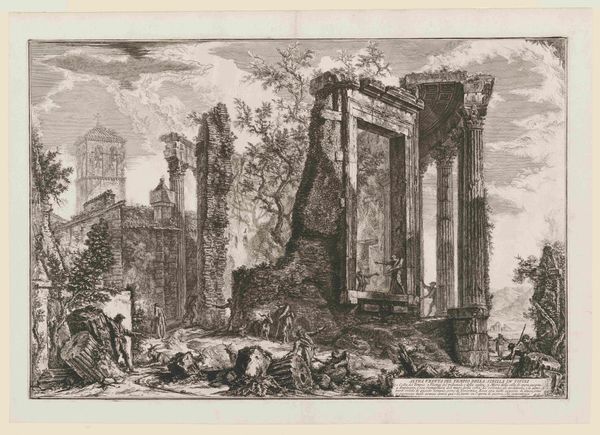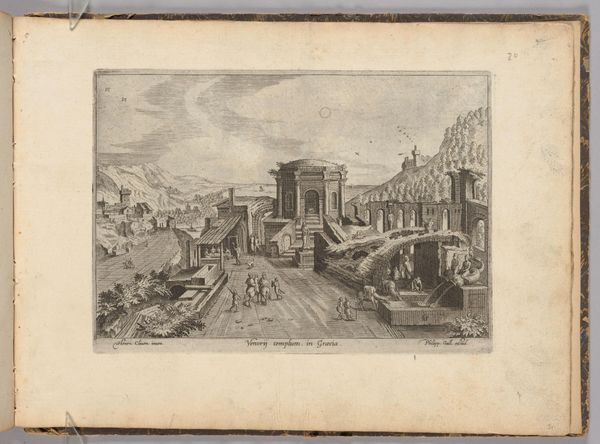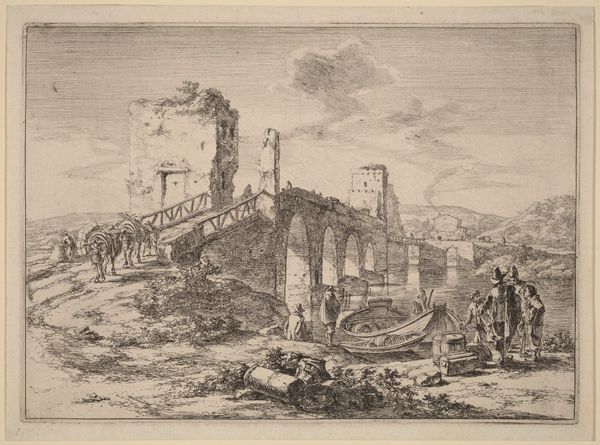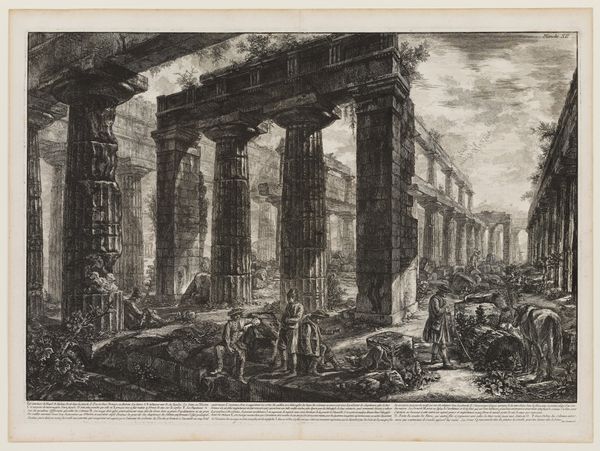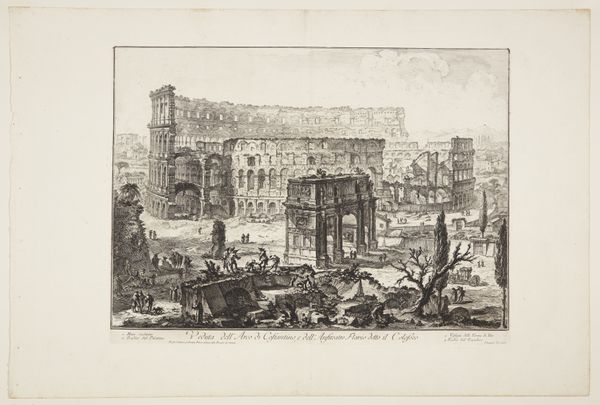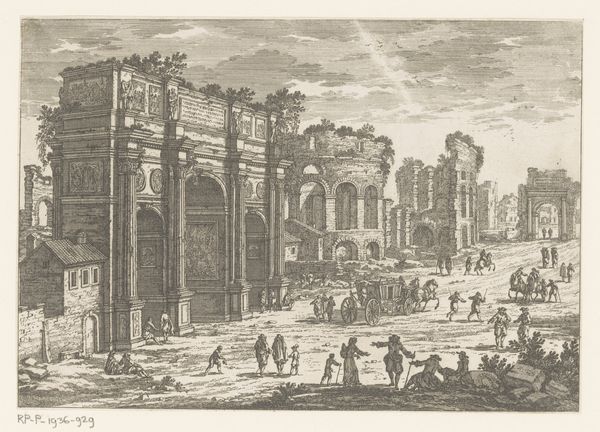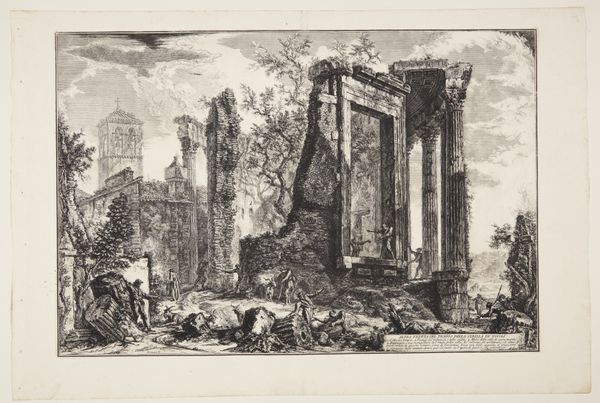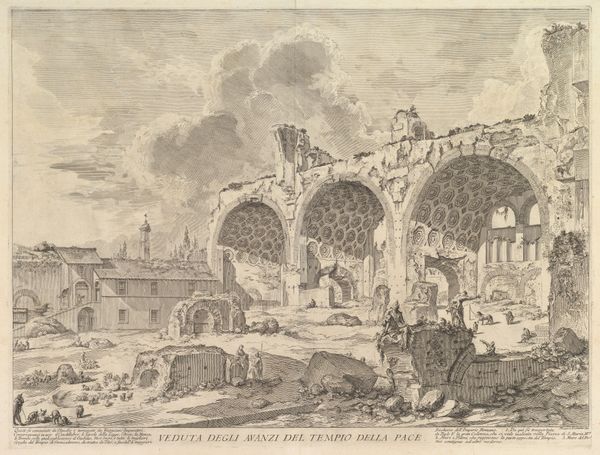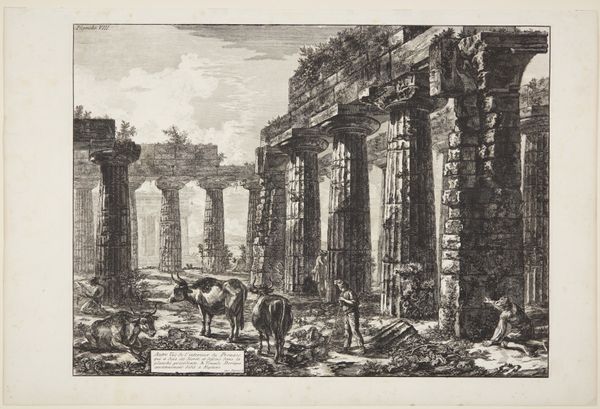
Dimensions: 18 5/8 x 27 13/16 in. (47.31 x 70.64 cm) (plate)21 x 30 1/4 in. (53.34 x 76.84 cm) (sheet)
Copyright: Public Domain
Curator: There’s an impressive desolation about this image. I see this etching of the Roman Forum, overgrown and almost melancholic. Editor: Precisely. What we're observing is Giovanni Battista Piranesi's "Campo Vaccino," created around 1772. It's a prime example of his "Vedute di Roma," or views of Rome, showcasing the city’s ancient grandeur in a state of picturesque decay. Curator: The layers of labor involved are quite striking. The physical act of etching that intense detail onto a plate is staggering. And all those linear marks and varied line weights to create tonal effects simulating light and shadow. Look how effectively Piranesi depicts depth. I imagine a market taking place here... Editor: It does highlight the passage of time and its impact on society and its structures. This bustling hub, formerly a vital Roman space, is now the Campo Vaccino—literally, the "cow field". Piranesi subtly critiques how contemporary Rome neglects and commodifies its history, and ultimately influences perceptions of empire. He even manipulates scale and perspective here for dramatic impact. Curator: Definitely a visual statement. But look at the composition itself, framing ruins in this way, almost celebrating how these durable, ancient materials stand the test of time, repurposed for daily life. How do you feel this piece reflects shifting notions of the picturesque landscape? Editor: Ah, it engages with it and complicates it! While presenting a scene of decay, romanticizing it as sublime, he also shows the daily routines, highlighting how such landscapes inevitably get absorbed back into daily life of a new era. It suggests the powerful relationship between Rome’s past and its present, reminding viewers of what’s been gained, and what’s been irrevocably lost to modernity’s material needs. Curator: I never thought of it that way before! It's a somber statement about production, consumption, and ruin. Editor: Indeed, reflecting on this image and Piranesi’s social critique makes you question what will remain after our own current endeavors.
Comments
minneapolisinstituteofart almost 2 years ago
⋮
By Piranesi’s day, the grand Roman Forum had become the Campo Vaccino—the “cow field.” Three columns topped by a bit of crumbling entablature were all that remained of the Temple of Castor and Pollux, twins known as the Gemini. According to legend, the brave brothers helped the young republic defeat the last of Rome’s tyrant kings. The temple was dedicated in the year 6 CE. At the far left is the Temple of Antoninus and Faustina, completed in 141 CE. Emperor Antoninus dedicated it to his deceased and deified wife, Faustina. For a sense of scale, note that its columns are 56 feet—or about five stories—tall. The pagan structure was largely preserved because centuries later it was converted into a church. In the distance, we can see the Colosseum, the huge ancient Roman amphitheater, and the Basilica of Constantine.
Join the conversation
Join millions of artists and users on Artera today and experience the ultimate creative platform.
